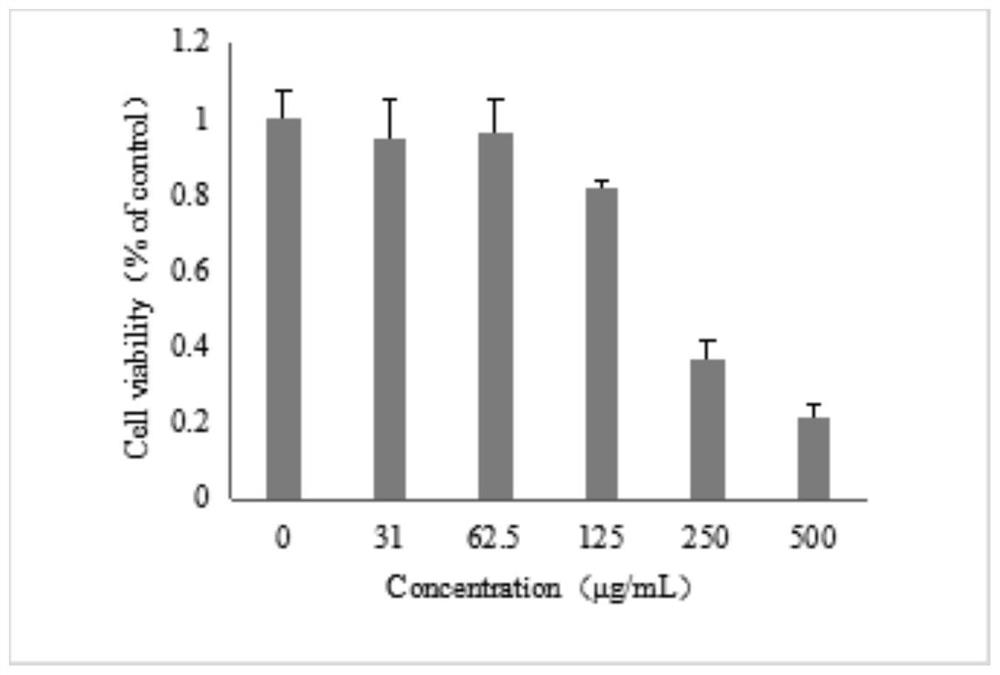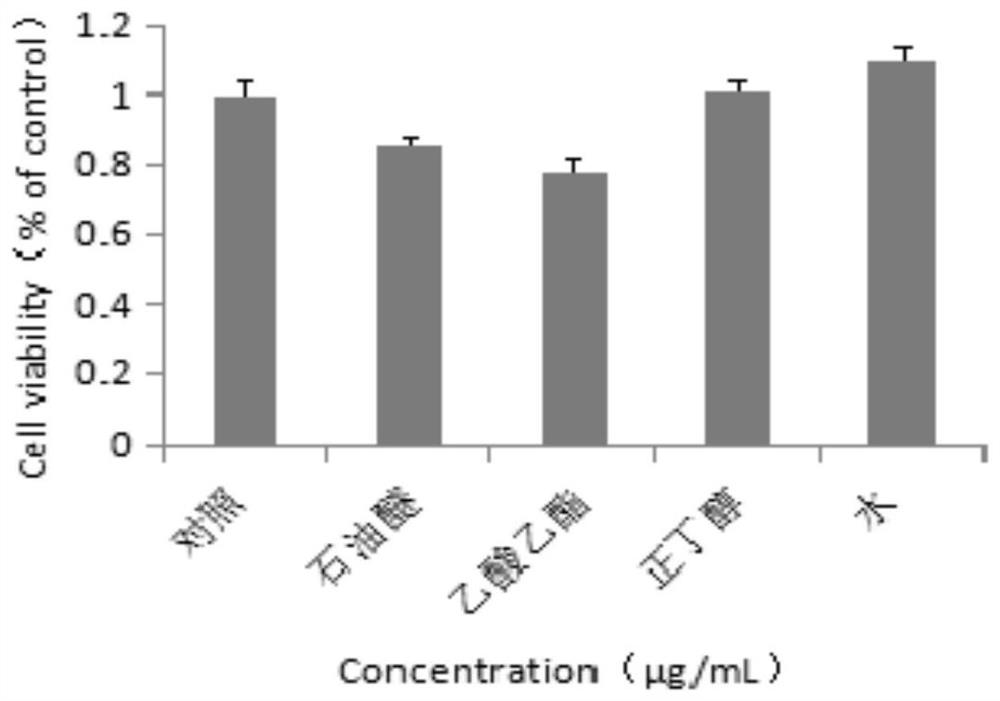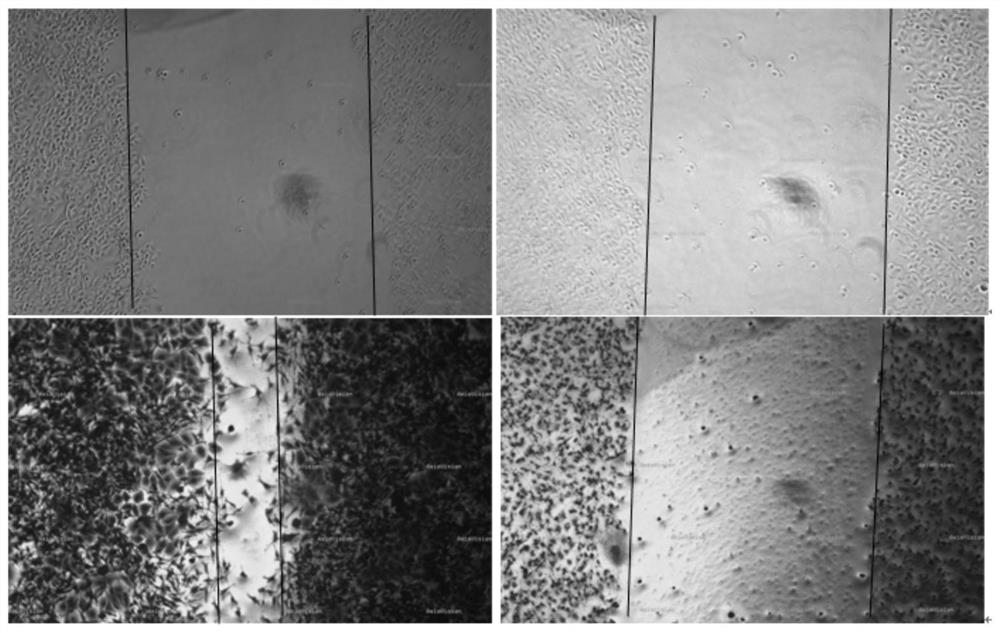Application of passionflower extract in preparation of medicine for preventing and treating breast cancer
A breast cancer, extract technology, applied in the application field of passion flower extract in the preparation of breast cancer drugs, can solve the problems of large adverse reactions, low water solubility, etc., to achieve good anti-breast cancer activity, inhibit proliferation, The effect of inhibiting migration
- Summary
- Abstract
- Description
- Claims
- Application Information
AI Technical Summary
Problems solved by technology
Method used
Image
Examples
Embodiment 1
[0032] The active ingredient extraction of embodiment 1 Passiflora vine leaves
[0033] Experimental materials: The vine leaves of P. edulis were collected from Chengmai, Haikou City, Hainan Province.
[0034] The collected vine leaves were dried in an oven at 40°C, crushed, passed through a 40-mesh sieve, soaked in 80% ethanol at a volume ratio of 1:5, and extracted by ultrasonic waves for 3 times, each time for 30 minutes. The extract is concentrated into an extract extract by rotary evaporation under reduced pressure, and the extract extract is freeze-dried to obtain a dry extract powder; the dry extract powder is dissolved in water to form a dry extract powder solution, and then the extractant petroleum ether is added for extraction. The solution was evaporated under reduced pressure to obtain the passionflower vine leaf extract.
[0035] The volume of the extractant is twice that of the extract dry powder solution. The volume ratio of described ethanol and Passiflora vi...
Embodiment 2
[0036] Example 2 The CCK-8 method was used to measure the activity of inhibiting the proliferation of breast cancer cells
[0037] The Passiflora vine leaf extract of embodiment 1 is mixed with the Passiflora vine leaf extract solution of different concentrations (31, 62.5, 125, 250, 500 μ g / mL) with DMSO solvent to carry out the cell activity test, and make the culture medium The DMSO content in it is less than 0.1%.
[0038] 96-well plate, inoculate about 4000 MDA-MB-231 cells per well, add the DMEM culture solution (containing 0.25% HEPES) of the above-mentioned different concentrations of Passiflora vine leaf extract after the cells adhere to the wall, and add 0.1% DMSO Culture medium was used as negative control. After 72 hours of treatment, add CCK-8 and put CO 2 After 1 hour in the incubator, read the absorbance at 405 nm with a microplate reader, and the cell viability=(A blank group-A treatment group) / A blank group×100%.
[0039] The experimental results show that ...
Embodiment 3
[0041] Example 3 Determination of inhibition of breast cancer cell migration activity by scratch method
[0042] 24-well plate with 2×10 per well 5Inoculate MDA-MB-231 cells in the logarithmic growth phase with a cell amount of 24 hours, scratch with the tip of a pipette after the cells adhere to the wall, wash off the floating cells with PBS, and dissolve the Passiflora vine leaf extract formulation described in Example 1 with DMSO solvent. Passiflora vine leaf extract extract (25, 50, 100, 200, 400 μg / mL) into different concentrations, stain the cells with crystal violet after 24 hours, take pictures under the microscope, count the changes in the scratch area before and after the treatment, and calculate the inhibition mobility.
[0043] The experimental results show that: different concentrations of Passiflora vine leaf extract all have the activity of inhibiting MDA-MB-231 cell migration, wherein 400 μ g / mL treatment compares the average inhibitory rate of 96.14% ( imag...
PUM
 Login to View More
Login to View More Abstract
Description
Claims
Application Information
 Login to View More
Login to View More - R&D
- Intellectual Property
- Life Sciences
- Materials
- Tech Scout
- Unparalleled Data Quality
- Higher Quality Content
- 60% Fewer Hallucinations
Browse by: Latest US Patents, China's latest patents, Technical Efficacy Thesaurus, Application Domain, Technology Topic, Popular Technical Reports.
© 2025 PatSnap. All rights reserved.Legal|Privacy policy|Modern Slavery Act Transparency Statement|Sitemap|About US| Contact US: help@patsnap.com



